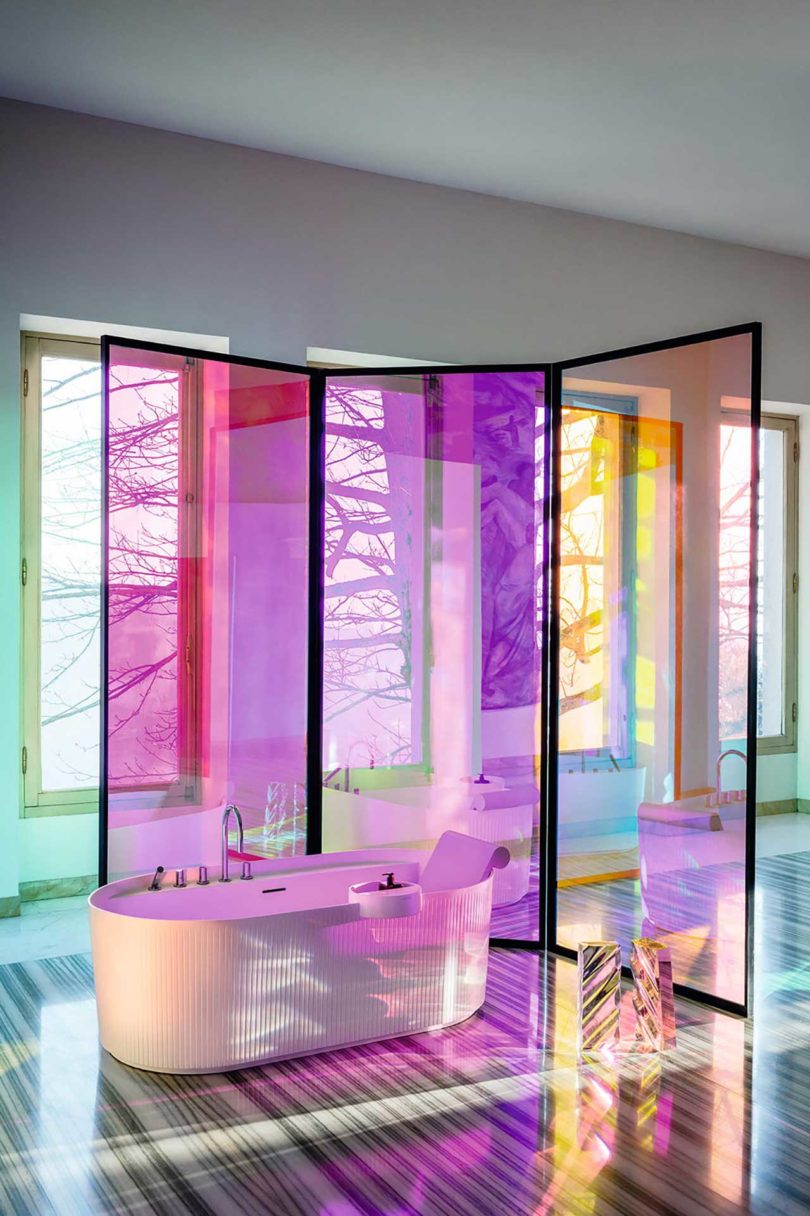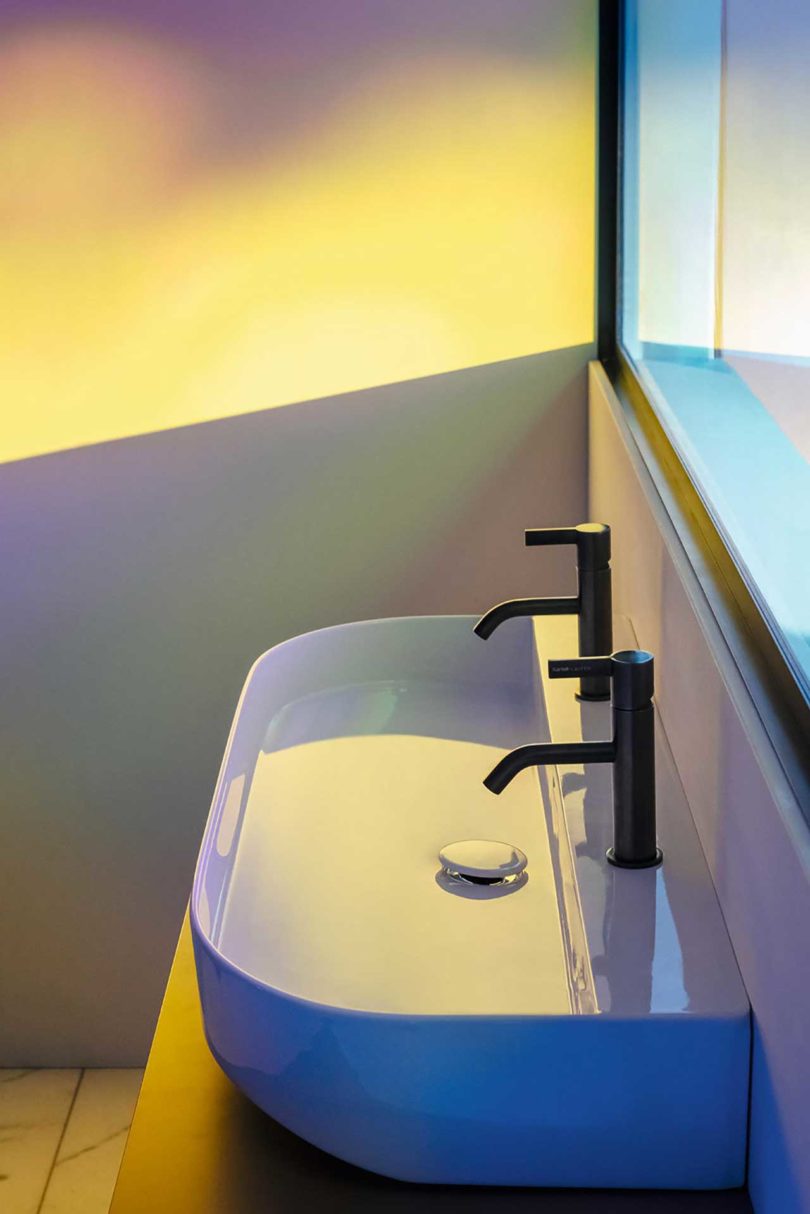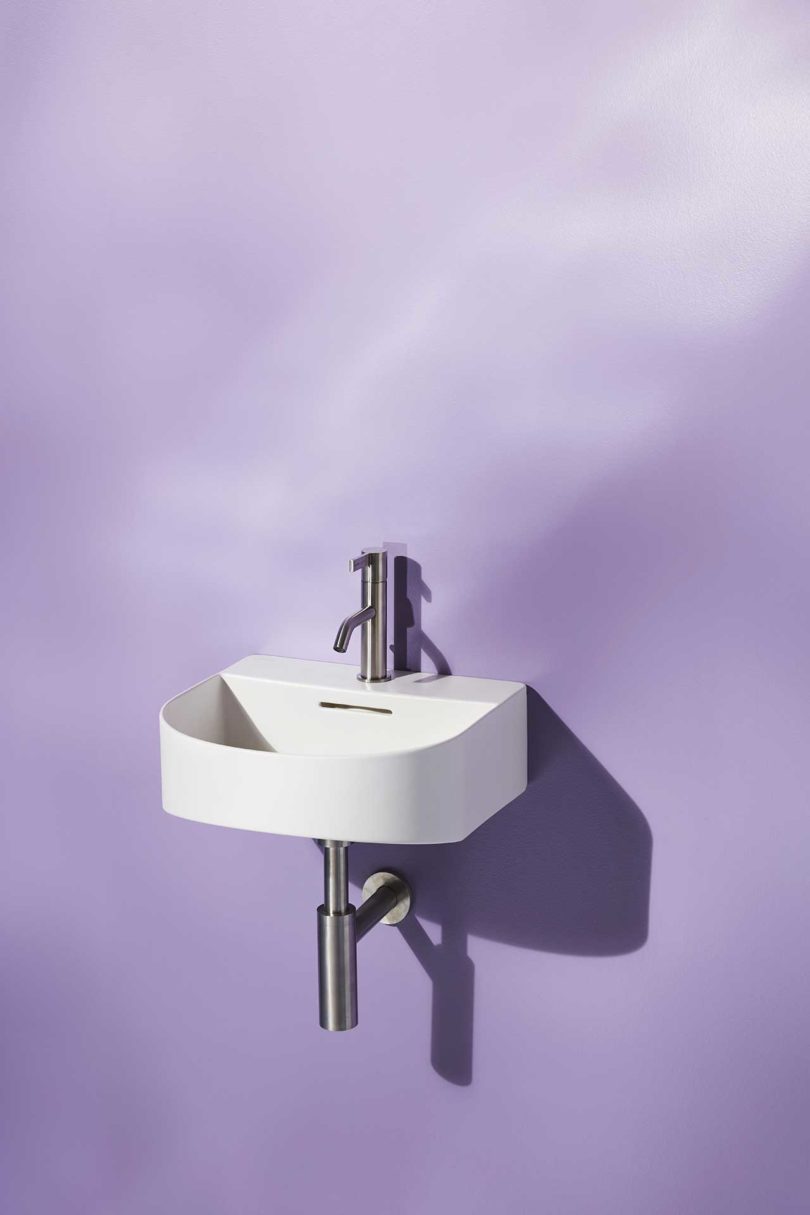Sonar by LAUFEN: Pushing the Boundaries of Bathroom Design
Known for co-operating with some of the best designers of our time, Swiss company LAUFEN continues to show how its heritage and thirst for innovation sets it apart in this market. Once again, through its use of the game changing material SaphirKeramik, it has shown just how far it can push the boundaries of bathroom design.
Launched for the first time in 2013, this groundbreaking material has opened up fresh design opportunities in ceramic that the likes of Ludovica and Roberto Palomba, Konstantin Grcic, Toan Nguyen, and now Patricia Urquiola have been able to exploit in the creation of lighter and smoother bathroom design collections.
The material, resulting from five years of extensive research by LAUFEN, has many revolutionary and high-tech attributes. Not only does it allow thinner and lighter products than traditional ceramic, it boasts extraordinary hardness and strength, making it extremely resistant to bending. These properties have been achieved through the addition of the colorless material corundum, which is also found in sapphires, and has the same bending strength as steel.
Designers who have had the opportunity to work with this state-of-the-art material have discovered that there are almost no restrictions in creating wafer-thin products with the smallest radii with this uniquely hard ceramic. It allows them to completely rewrite the rulebook of what has traditionally been achievable in bathroom ceramic design.
For its latest collaboration, LAUFEN has worked with the internationally acclaimed and eclectic designer Patricia Urquiola to reveal the third generation of SaphirKeramik. The new collection, which is already the winner of a 2018 iF Award and Interior Design’s Best of Year Award 2018, is called SONAR and offers various options in washbasins, WCs, a bidet, new bathtubs and a suite of bathroom furniture.
Talking about whyLAUFEN chose Urquiola for this collaboration, Marc Viardot, Director of Marketing and Products, says, “We had huge admiration for her work but also for her personality. I think this is key for a collaboration, to ensure that the relationship works well and you create something that is bigger than the initial brief.”
Viardot was impressed with Urquiola from the get go so decided to start with a smaller project. Urquiola was brought in to design the LAUFEN showroom in Madrid. What she created was an informal setting that is perfect to welcome industry professionals, architects, interior designers, and developers. It was a new showroom concept, like a creative collaboration space, where creatives, architects, and technicians can meet and work together.
“From that project it became evident that we wanted to take this relationship further and offer Patricia the opportunity to work with our SaphirKeramik,” says Viardot.
As far as the brief goes, Viardot says that he allowed Urquiola more freedom than he has done in most of previous briefs for a design collaboration. “We wanted to take this to another level and explore something that was not already there. Thinking in new dimensions requires you to go beyond the usual process so the relationship has to be very close. For me the relationship is more important than any brief.”
The brief was SaphirKeramik 3.D. Viardot explains that it was not only the third generation of SaphirKeramik, but it was also about exploring a third dimension. “We had had some experience working with Konstantin Grcic on texture, tactility, and reliefs, but I wanted to explore this 3D aspect further. I also wanted to explore another dimension in terms of typologies and application. And Patricia delivered on both tasks very well.”
The resulting collection is characterized by a ceramic surface with ribbed texture and a slimline profile that lends the products an attractive lightness. In recent times, the washbasin appeared to have reached its natural design limits – the traditional ceramic materials used in bathrooms could be fashioned into only a restricted range of shapes, which imposed constraints on applications. But Urquiola was able to use SaphirKeramik to come up with typologies for the washbasin that did not exist before.
“Modern living spaces aren’t getting any bigger and this is particularly true of the bathroom,” says Viardot explaining that even in the premium living sector the small proportions in bathrooms have been somewhat overlooked as we have continued to fill our spaces with bulky sanitary ware and furniture.
The SONAR collection, thanks to the innovative properties of SaphirKeramik, has given rise to a 1000 mm double bowl washbasin that is no wider than a large single washbasin. Double bowl washbasins can now be installed even in small urban bathrooms without adversely affecting either bowl capacity or the bathroom layout.
The collection also features a floor-standing, all-ceramic washbasin, which, despite its small footprint of only 41cm wide, conceals all of the plumbing. For another basin Urquiola pushed the boundaries even further and came up with a washbasin bowl only 340 mm wide. With the help of brackets it can be mounted in front of the wall, so it looks like it is floating, and therefore does not necessarily require a washbasin top.
A further innovative detail to note is the marginally sloping base of the washbasin bowls, which gently channels the water into a transverse recess and from there to a conventional outlet concealed beneath a removable SaphirKeramik cover.
What unites the whole collection though, apart from the slim profile and small footprint of many of the pieces, is in fact the distinctive D-shape that Urquiola has used throughout. Many of the pieces are tapered to the front, which adds a pleasant visual lightness to the design.
“Rounded corners make sense in small spaces,” says Viardot. “Everything had become very square, very architectural and linear, to hide the bulkiness. But in this product we have the advantage of a geometric shape with a rounded front.”
The final aspect that really sets the SONAR collection apart from any other sanitary ware on the market is of course the three-dimensional texture on the external surface of the washbasins. The inspiration for this element of the design was provided by the way in which sound propagates in water.
“The relief is completely new,” says Viardot. “I don’t know any other ceramic washbasin on the market that has relief carved into the molds like that. We had to develop a new production process to achieve this. It is a nice feature because of the material and gives it a personal touch. People always like to touch SaphirKeramik products because they can’t believe it is so thin and actually ceramic.”
Texture in the bathroom is not necessarily a new thing, after all, we’ve seen textured tiles gaining in popularity over the past few years. But never before have comparable ceramic surfaces appeared in a bathroom environment.
“I think that people are starting to crave tactility in the bathroom also,” explains Viardot. “In that space you are usually naked with no layers between your skin and the product. The surfaces are also normally quite cold in this environment. So we asked ourselves how we could make it more tactile and sensual.”
And the SONAR collection certainly achieves that. Working with Patricia Urquiola, LAUFEN has managed to bring together the two, sometimes conflicting, souls of the company: traditional craftsmanship and avant-garde technology, in order to launch a collection that is really revolutionary in terms of bathroom design.
Stacey Sheppard is a UK-based freelance writer and author of the popular award-winning blog The Design Sheppard. She specializes in writing about interior design. She has a particular penchant for kitchen and bathroom design but also has a keen interest in surfacing and materials. When she’s not working she can be found manically pinning inspiration for her own home renovation project. You can follow Stacey on Twitter @StaceyJSheppard and Instagram @StaceyJSheppard.
from Design MilkInterior Design – Design Milk http://bit.ly/2E7nSfU
via Design Milk








No comments